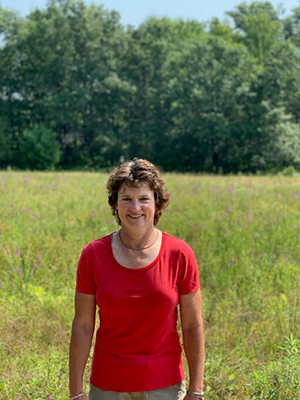Since childhood, Jean has been passionate about playing softball, from the physicality and competition of the sport to the lifelong friendships she has formed.
One day in 2018, Jean was playing in the fifth game of a softball tournament with her team. when a flyball whacked into the outfield sent Jean on the chase. Suddenly, while running, she felt excruciating, burning pain in her leg that caused her to crumple to the ground in agony.
At first, Jean thought she pulled a muscle in her leg and decided to rest and ice it. However, daily tasks became more painful. Jean was having trouble walking a few blocks before the leg would spasm and lock up. Trying to extend it or straighten it out was nearly impossible and even lying in bed was painful and required constant repositioning.
Shortly after the injury, Jean scheduled a primary care visit where she described the injury to her doctor. The doctor informed her to wait three to four weeks and see if symptoms improve. With no sign of the injury healing, she had and MRI and was referred to Dr. Woods of Aurora BayCare Medical Center in Green Bay.
After Dr. Woods assessed Jean's injury, it was determined that she suffered a non-surgical distal hamstring injury while playing softball. The two began discussing and ruling out various possible solutions, at which point, Dr. Woods mentioned regenerative medicine procedures.
After many discussions regarding regenerative medicine procedures, Jean and Dr. Woods agreed the platelet plasma, injection would be most beneficial. This is used when a high-grade partial thickness injury to the tendon occurs, but is not completely torn off, making Jean the perfect candidate for this non-invasive treatment. Initially, blood is drawn from the patient and is then separated into different categories, one being plasma. Dr. Woods then readies the injection area where the plasma from the patient is inserted back into the wound area. The newly-inserted plasma acts as a jumpstart to the injury, naturally telling the body something is injured and needs to be fixed.
"Jean's best choice was platelet plasma injection, because it allows the body to stimulate the natural healing process since her body wasn't repairing itself the way it needed to on its own," explained Dr. Woods. Altogether, the process takes roughly three hours, with a two-week resting period, followed with a couple of months of physical therapy to aid the healing.
It has now been several months since Jean had the treatment, and she is back to her active lifestyle. She's running, hiking and already practicing for softball season.
"Dr. Woods explained it so well," reflected Jean. "[He was] so thorough and preferred to do this natural route." As Jean readies for her next softball season, she expressed that this non-invasive treatment was a "night and day difference after the procedure", helping her regain her ability and confidence to partake in all the activates she enjoys.
